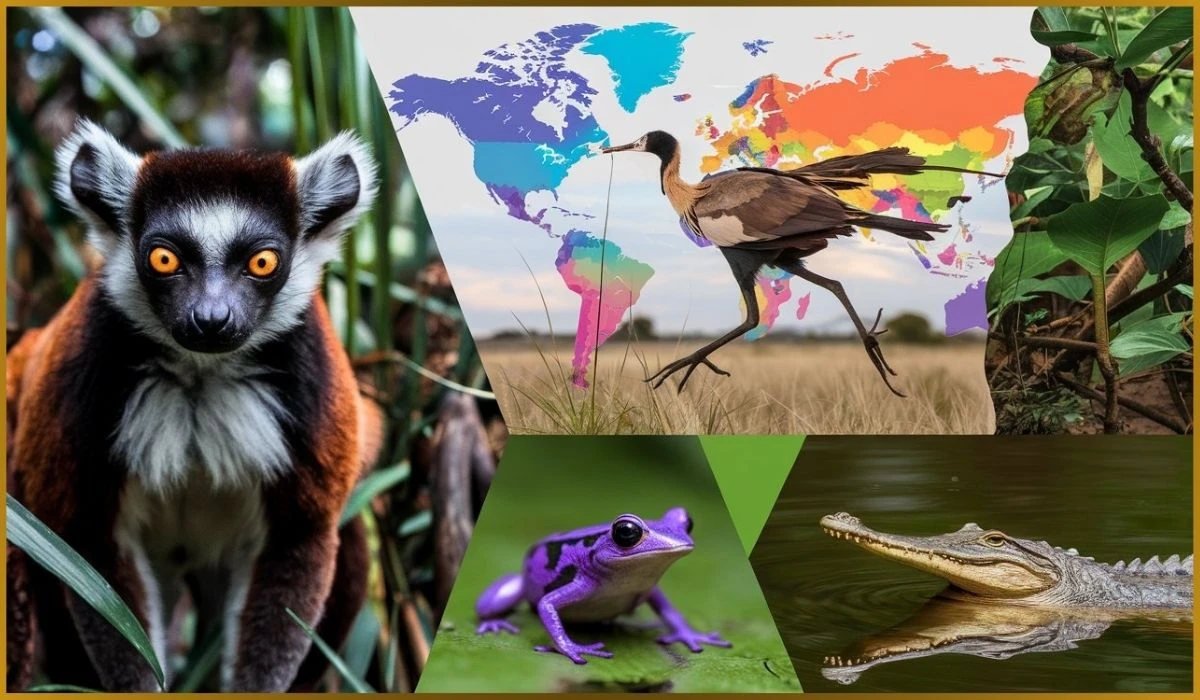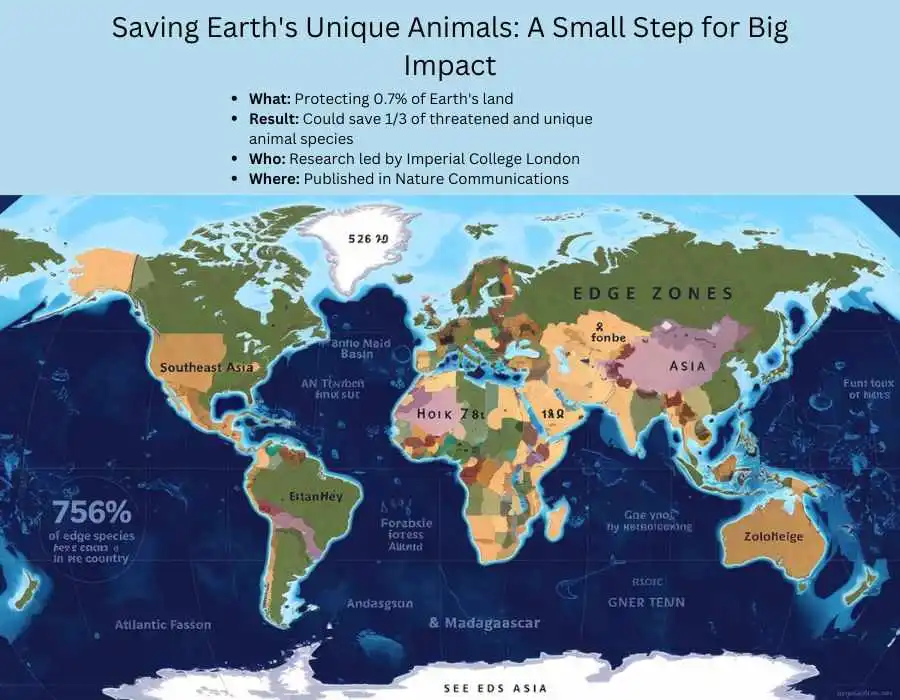
Did you know that protecting less than 1% of land on our planet could save a third of its most unique species? That’s right! A groundbreaking study has revealed that focusing on less than 1% of Earth’s land could be a game-changer for conservation. Let’s dive into this exciting discovery!
The Big Picture
- What: Protecting 0.7% of Earth’s land
- Result: Could save 1/3 of threatened and unique animal species
- Who: Research led by Imperial College London
- Where: Published in Nature Communications
Meet the Stars of the Show
These incredible animals could benefit from targeted conservation efforts:
- 🐒 The Aye-aye: A quirky lemur from Madagascar
- 🦅 The Secretary Bird: A long-legged bird could benefit
- 🐸 The Purple Frog: The purple frog also benefits from these conservation efforts.
- 🐊 The Gharial: A crocodile with a super-long snout
Learn more about these unique species at the IUCN Red List
The EDGE Concept: Not Your Average Conservation Approach
EDGE stands for “Evolutionarily Distinct and Globally Endangered.” It’s a smart way to prioritize conservation efforts:
- Evolutionary Distinctiveness: How unique is the species?
- Global Endangerment: How at risk of extinction is it?
Combining these factors could help us to identify the most crucial areas for conservation.
25 EDGE Zones

The study identified 25 EDGE Zones where conservation can make the biggest splash. Some hotspots include:
- Southeast Asia
- Amazon Basin
- Atlantic Forest
- Madagascar (the ultimate EDGE hotspot!)
Fun Fact: 75.6% of EDGE species live in just one country. Talk about putting all your eggs in one basket!
The Human Factor
Here’s where things get tricky:
- 80% of EDGE Zones face high human pressure
- Many EDGE Zone countries struggle with poverty and development issues
We need a balanced approach that helps people and animals live.
What Can We Do?
- Protect more land: Only 20% of EDGE Zones are currently protected. We need to protect more land for animals and birds.
- Support sustainable development in EDGE Zone countries like the Amazon Basin, Atlantic Forest, and Madagascar. Etc.
- Raise awareness about these unique animals and their habitats. Educate more people about their importance in wildlife.
Get involved with conservation efforts through WWF
The Road Ahead
As world leaders prepare for the upcoming COP16 Biodiversity Conference, it’s crucial to remember EDGE Zones. We can make a massive difference for Earth’s most unique and endangered creatures by focusing on these areas.
Want to learn more? Check out these resources:
Remember, saving Earth’s incredible biodiversity starts with small steps. Together, we can make a significant impact!

